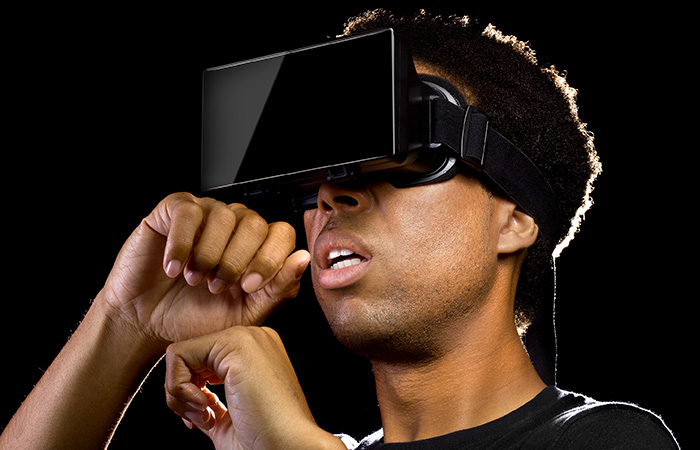TWiP 432: Facebook Gets Virtually Real
[smart_track_player url=”http://www.podtrac.com/pts/redirect.mp3/pixelcorps.cachefly.net/twip/twip_432_aud.mp3″ color=”6a1915″ title=”Facebook Gets Virtually Real” artist=”TWiP 432″ ]
Remember back in the day when Quicktime VR was all the rage? In many ways, it represented the next logical step in video. We started seeing QTVRs everywhere — from real estate, to automotive, to product photography and more. Imagine the possibilities!
Apple also featured QTVRs on their site as a way for shoppers to get a 360 “walk around” view of some of their newest products. And then poof, nothing. It seemed like overnight, we forgot all about QTVR and the promise it held.
Well, it looks like a similar technology is back, and with the proliferation of high-speed Internet access, instead of a single still 360 photo… you can now “step into” live 30 frame per second streaming video. Imagine the possibilities — again.
This new technology is being invested in by some of Silicon Valley’s heaviest hitters, including Google and Facebook. But is it here to stay? Or is just another shiny object for us to get distracted by.
Links Mentioned in This Episode
- Facebook launches 360 degree videos with new Star Wars trailer
- Sony announces its' new low-light beast – the A7s II
- PETA sues photographer on monkey’s behalf to give monkey copyright
Picks of the Week
- Don: SUS ProArt 32” monitor PA328Q
- Doug: Platypod Pro
- Frederick: Mike“Sharky” James’ Petapixel Photography Podcast
TWiP 432 is brought to you by:
Freshbooks
Freshbooks – the simple cloud accounting solution that’s helping thousands of new entrepreneurs and small business owners save time billing, and get paid faster. Sign up for free today at FreshBooks.com and join over 5 million users running their business with ease.
Squarespace
Start building your website today at Squarespace.com and enter the offer code “TWiP” at checkout to get 10% off.Squarespace…Build it Beautiful!
Eye-Fi
Eye-fi's award winning photo apps and services automatically organize your photos and let you create beautifully rich photo collections combining images from all your devices – all without ever having to wait until you get home. Just click the shutter – any shutter and all your photos are all together, brilliantly displayed and accessible on any device instantly. Point – Shoot – Eye-Fi. Try it for free at EyeFi.com
Connect with Our Hosts & Guests
- Doug Kaye: Website, Twitter, Google+
- Don Komarechka: Website, Twitter, Google+
- Frederick Van Johnson: Website, Twitter, Google+, Instagram
Credits
- Pre-production by: Bruce Clarke
- Post production by: Suzanne Llewellyn & Vince Bauer
- Bandwidth provided by: Cachefly
- Intro Music by: Scott Cannizzaro





Flash contacts. As a photo tech for nearly 35 years, I would to remind you that older cameras were purely mechanical, so the flash trigger could not be voltage based. There were a pair of contacts attached to the shutter that closed to fire the flash. The older flashes discharged the entire 300v dc through the contacts on the shutter on the way to the flash tube. Newer cameras have an electronic switch to fire the flash that is damaged by the 300v passing through it. Because of this, newer flashes have a separate 6 volt trigger circuit that is safe for the camera circuit. It is easy to test your flash if you have a voltmeter. Set the meter to DC volts, put one probe on the center contact on the bottom of the shoe, and the other probe on the contact in the groove on the side of the shoe. If it reads 6 volt, it’s safe for any camera. If it reads 250-300 volt, then use the Wein Safesync (or pick up a cheap, used flash instead).
I still don’t think VR will take off in the movie/TV world, simply because moving images are composed by DP’s/cinematographers/videographers to tell the story. Regular people don’t normally have good compositional skills, so they’ll always default to being a passive watcher. Once good example is sports. Even if there was a way to mount cameras in all the helmets or on top of the heads of all the players, no one would want to watch a first person perspective of a sporting event for very long. There will always need to be someone who can pick the best composition for the audience.